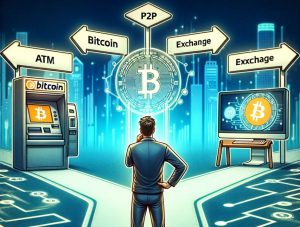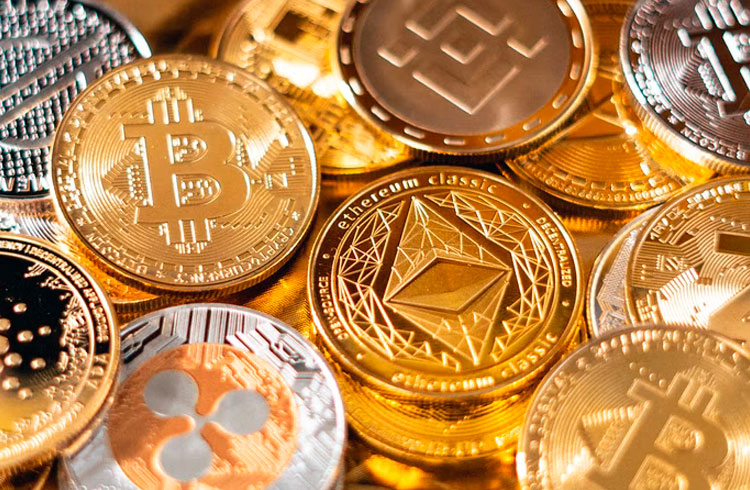Top 10 DeFi Lending Platforms In 2020
8 min readTable of Contents
The DeFi lending platforms have promised to fill the gap lagging in traditional banking.

Consequently, it serves as the new financial service enabler while fulfilling the mass adoption needs of Blockchain and cryptocurrency. It is popularly called open finance because it takes pioneering the open banking movement where individuals don’t need a central party for financial services.
Meanwhile, this article tells you what you need to know about DeFi lending while sharing a few details about the top DeFi lending platforms. However, it is important to clarify what a DeFi lending is and draw a few distinctions about DeFi borrowing.
DeFi lending and borrowing
In DeFi lending, investors and lenders issue a loan or deposit fiat for in interest through a distributed system and a decentralized application. On the other hand, an individual or business borrows money for interest through a decentralized network. Both lending and borrowing make use of DApps, Smart contracts, among other DeFi protocols.
Why Decentralized Lending?
While Decentralized finance gave finance a new meaning, Decentralized lending provided various lending opportunities and benefits to lenders. Therefore, DeFi lending has the under-listed benefits:
- Hedge funding
The cryptocurrency space, in general, are volatile, which often sends investors packing. Therefore, if the investor doesn’t want to get burnt in the market, frustrating price swings, the investor, or holder sell-off at bull run, however, DeFi lending provides an opportunity for the investors who want to hold Crypto for a specified time.
Also, DeFi lending allows traders or investors to deposit Crypto for fiat to fulfil other needs without selling off. For instance, a business that holds crypto assets and won’t want to sell to execute a project could simply approach a DeFi lending platform to deposit Crypto for fiat to execute the project.
- Earn interest in holding crypto assets
As a crypto asset holder, you don’t need to sell off to avoid the bears. Rather, you lend it out with agreed interest rates defined in the smart contract. Within the stipulated time, you earn your money with interest.
Consequently, DeFi lending becomes a haven for panic sales.
Meanwhile, the underlying technology of DeFi doesn’t demand rigorous documentation, as seen in the traditional lending system. Rather, it is a function of clicks through a Decentralized Application. I’m currently, lenders earn interests without stress in a distributed and centralized network.
How does DeFi lending work?
The decentralized lending is as simple as putting your hand in the pocket to lend a borrower. However, the Decentralized application and Smart contract represent your intermediaries and negotiators, respectively. Assuming you have $50,000 to loan through a DApp, you only need to press some buttons on your PC, and that’s all.
What happened is that you opened a DApp which hosts a smart contract and a pool of borrowers. So at the click, you decide what interest rate you want to give out a loan, if favouring, then lending is on the way. Concurrently, the smart contract automates lending and borrowing agreement.
Top DeFi lending platforms
A DeFi lending platform is similar to the traditional lending platform except that there is no central authority. Consequently, all you do is done across a trustless network. However, there are several DeFi lending platforms you may like to know. They are as follows:
1. Aave [LEND]

It is an Ethereum based open source and non-custodian protocol that enables the creation of money markets. Although it offers other services, it is popular for lending and borrowing. Like several DeFi lending platforms, it offers a dual DeFi token model: aToken and LEND.
aToken is an ERC-20 token where lenders interest compound while LEND is the governance token Aave offers varieties of loans and lending services such as uncollateralized loans, “rate switching,” Flash Loan, and unique collateral types.
The interest rate varies from originating and flash loans at 0.25% and 0.09%, respectively.
However, it is one of the DeFi lending platforms that support many assets including Basic Attention Token (BAT), Dai (DAI), Ethereum (ETH), Kyber Network (KNC), Aave (LEND), ChainLink (LINK), Decentraland (MANA), Maker (MKR), Augur (REP), Synthetix (SNX), TrueUSD (TUSD), USD Coin (USDC), Tether (USDT), Wrapped BTC (WBTC), 0x (ZRX), and Synthetix USD (SUSD).
2. Maker

Maker protocol, popularly called Multi-Collateral Dai (MCD) system, is one of the most reputable DeFi lending and borrowing platforms. It was founded in 2015 as a means to circumvent the volatility of the cryptocurrency. Hence, it’s DAI is pegged to the dollar for lending and borrowing once the smart contract terms are met.
MakerDAO, an open-source protocol built on Ethereum, enables users who have ETH and access to MetaMask to lend in the form of DAI. Similar to many other DeFi lending platforms, it hosts a dual token model: Maker, and Dai. Dai is a stablecoin pegged to the dollar to allow users to lend and borrow accordingly. On the other hand, Maker Token is the governance token that maintains stability in the system.
The platform offers users a 9.05%, 4.6% interest rate, and 30D average rate. If you are ETH, WBTC, USDC, and BAT holder, you can lend and borrow on the Maker protocol.
3. Compound

The compound is another popular openly accessible smart contract built on Ethereum Blockchain. It allows borrowers and lenders alike to lock their crypto assets into the protocol.
Unlike other DeFi lending platforms, it allows the tokenization assets locked in their system through the use of cTokens. Tokenization allows users to have a digital representation of their assets to trade, lend, and so on.
Consequently, when you deposit ETH, you get cToken, which can be used as collateral. On the other hand, the COMP token is its DeFi token. However, it supports a wide range of nine assets issued on Ethereum, including BAT, DAI, SAI, ETH, REP, USDC, WBTC, USDT, and ZRX.
It has a varying DeFi lending and borrowing rate depending on the supported currency. The lending rate for BAT, DAO, ETH, USDC, WBTC, USDT, and ZRX are 0.03%, 2.99%, 0.14%, 3.08%, 0.29%, 2.2%, 2%, respectively.
4. InstaDApp

This is a multi-purpose DeFi platform that manages digital assets. It provides varieties of DeFi services like lending, borrowing, swap, leverage, etc. Look at it as a DeFi bank that allows you to integrate your services to serve your purpose.
The platform offers users one-click switching platforms to easily switch to cheaper lending platforms with lower interest rates, especially for Maker and Compound.
By implication, it offers you a smart wallet portal for DeFi protocols. However, it is as simple as owning a Coinbase wallet or MyEtherWallet or any related one to loan, borrow, trade or swap.
However, the platform is free to use except that you must have enough ETH for transaction fees.
5. dYdX

dYdX brought margin trading, options, and derivatives to the blockchain space, which are normally found in fiat markets and common for traditional investments. On the platform, users can trade, lend, and borrow ETH, DAI, and USDC. It also offers cross margin trading and isolated margin trading as well as using a perpetual market contract of BTC/USDC of 10x leverages
Loans on the platforms are on 125% collateral and 115% self-liquidation. Meanwhile, unlike many other DeFi lending platforms, it doesn’t have a native token as such charges trading fees in the supported tokens.
6. Dharma protocol

It is a tokenized debt and funding decentralized platform where lenders, borrowers, and other fund managers trade and transact with the other. It boasts of Dharma Settlement Contracts, which mimics the traditional financial instruments and stakeholders like agents typically present in the loan facilitation process. Four main agents operate the network: Borrowers, Lenders, Underwriters, and Relayers. Borrowers and Lenders are simple operators. Relayers are agents that host the order book for potential lenders to browse through, while underwriters are the agents responsible for identifying the possibility of default and structure the terms of the debt issue.
It uses a dToken for governance and Dao as the stable coin. However, it supports only two assets, Dao, and USDC at the moment. It operates an open-source and non-custodial-custodial wallet where users have 100% control of funds. Dollar deposits earn 2.7% APR through the Compound Protocol, while deposits are guaranteed by over $1B in cryptocurrency collateral. However, the platform allows up to $1,000 per day.
7. bZx

The platform provides a unique alternative to decentralized margin trading dYdX. It leverages bZxR token to relayers to collect trading fees. Unlike some other DeFi platforms, Relayers matches borrowers and lenders order such that borrowers may receive margin loans. However, the platform relies on the upkeep of a deep insurance fund. Therefore charging lenders 10% of their earnings and aggregating it into the funds to ensure that lenders will always be covered if borrowers are unable to pay back their loans.
However, since rebranding in 2018, it has integrated two other DeFi platforms: Fulcrum Trade and Torque, a decentralized lending and margin trading platform, and a DeFi borrowing platform.
It supports lending and borrowing with Basic Attention Token, Kyber Network, 0x, Chainlink, Ethereum, Augur, sUSD, USD Coin, Bitcoin, Dai, and Sai.
Lending and borrowing depend on iToken and pToken, while bZxR token is for governance.
Since it uses iToken for lending, the lending rates are as follows: Dao, USDC, and ETH are 1.03%, 1.29%, and 0.95%, respectively.
8. KittieFight

This is the first innovative DeFi lending platform that uses a gamified approach to provide lending for gamers and other crypto users. It added gaming as a way of adding liquidity using yield farming and incentivized tournaments. While gamers and developers receive incentives for hosting DApps, and rewards for playing respectively, they have the privilege to win KTY tokens and lending ETH.
However, many details about DeFi lending rates and supported currencies are not available now, as they are doing IDO. Meanwhile, it could be inferred that the platform supports ETH and its native governance token KTY.
9. Mainframe

The mainframe is formally launched in 2018 as a decentralized communications platform. It was relaunched as a DeFi lending platform after the acquisition of Sablier, a protocol for real-time finance on the Ethereum blockchain.
Upon relaunch, its selling point is the novel Guarantor Pools, which hopes to protect collateral vaults, collateralization ratios can be much lower without increasing risk to the system, unlike the Crypto-loan collateral ration of 150%.
The platform uses Mainframe token, MFT for governance, and yToken to reward Lenders.
FAQ
What is the DeFi platform?
They are platforms that offer decentralized financial services or those platforms that provide you self-banking protocols.
What is decentralized lending?
It refers to those lending methods that you don’t need a central body to make lending decisions, including Lending rates.
How does DeFi lending work?
You only need to sign up on a Decentralized application that offers the services you want. If you want to lend, click on the DeFi lending rates and other requirements you may want to lend.
Is BlockFi a DeFi?
BlockcFi is centralized while DeFi is decentralized. By implication, you don’t have your keys when using BlockFi.
How do you DeFi?
It is as simple as signing up to the DeFi platform of your choice to decide on lending, borrowing, saving, trading, and as the case may be.
How do you make money with DeFI?
You can make money through lending for interest, trading for profits, and so on.
What is the DeFi pulse?
It is similar to Coin Market Cap, Coingecko, and other cryptocurrency resources. However, it provides you all you need to know about the DeFi market and statistics.
What are DeFi tokens?
They are governance or native tokens of the DeFi platforms. For instance, KTY, LEND, dToken are the DeFi tokens of KittieFight, Avare, and Dharma.
Sunil Sharma






